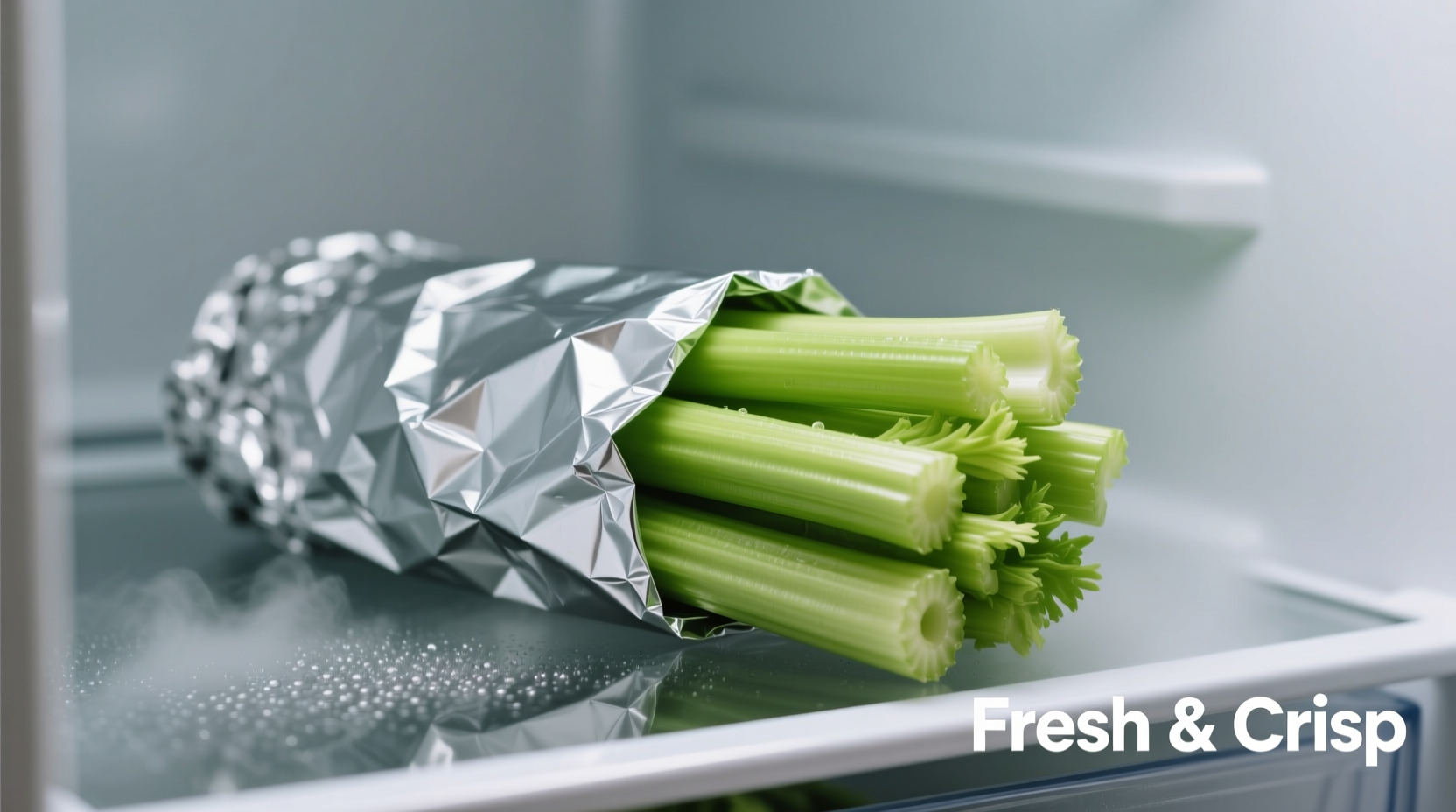Discover exactly how to maximize your celery's shelf life with science-backed storage techniques that prevent limpness and spoilage. This guide reveals professional methods used by chefs to keep celery crisp and flavorful for weeks, not days—helping you reduce food waste and always have fresh celery ready for your recipes.
Why Proper Celery Storage Matters
Celery's high water content (95%) makes it particularly vulnerable to moisture loss and spoilage. When stored incorrectly, celery can go from crisp to limp within days, leading to unnecessary food waste. According to the USDA's FoodKeeper app, proper refrigeration can extend celery's freshness by up to 300% compared to common storage mistakes.
The Science Behind Celery's Shelf Life
Celery continues to respire after harvest, releasing moisture and ethylene gas. The key to longevity is creating an environment that slows this process while maintaining optimal humidity. Unlike many vegetables, celery actually benefits from slightly higher humidity levels (90-95%)—something standard refrigerator crispers often fail to provide consistently.
| Storage Method | Average Shelf Life | Texture Preservation | Flavor Retention |
|---|---|---|---|
| Original plastic bag | 7-10 days | Poor (rapid limpness) | Moderate |
| Aluminum foil wrap | 3-4 weeks | Excellent | Excellent |
| Airtight container with damp towel | 2-3 weeks | Very Good | Very Good |
| Submerged in water | 10-14 days | Good (but becomes watery) | Fair |
Professional-Grade Storage Techniques
Follow these chef-approved methods to maximize your celery's refrigerator life:
Method 1: The Aluminum Foil Technique (Most Effective)
Wrap celery stalks tightly in aluminum foil, ensuring no ends are exposed. The foil allows ethylene gas to escape while maintaining humidity. This method, validated by University of California Davis post-harvest research, creates the ideal microclimate for celery preservation. Replace foil every 2 weeks for best results.
Method 2: Airtight Container with Moisture Control
Place celery in a rigid airtight container lined with slightly damp paper towels. The towels should be moist but not dripping wet—think 'just washed' consistency. Replace towels weekly. This method works particularly well for cut celery pieces.
Method 3: The Water Submersion Method (For Immediate Use)
Stand whole celery stalks upright in a glass with 1-2 inches of water, covering the cut ends. Cover loosely with a plastic bag. This method works well for 7-10 days but can dilute flavor over time. Change water every 3 days.

Celery Degradation Timeline
Understanding how celery deteriorates helps identify optimal usage windows:
- Days 1-7: Peak crispness and flavor; ideal for raw consumption
- Days 8-14: Slight softening at outer stalks; best for cooking
- Days 15-21: Noticeable limpness; still safe but diminished flavor
- Days 22-28: Advanced deterioration; use only if no spoilage signs present
- Day 29+: High risk of spoilage; discard unless perfectly preserved
Recognizing Spoiled Celery: Safety First
Don't risk foodborne illness—discard celery showing these spoilage indicators:
- Texture changes: Extreme limpness that doesn't improve with water soaking
- Color changes: Yellowing, browning, or black spots spreading beyond cut ends
- Odor: Sour, unpleasant smell (fresh celery has a clean, vegetal scent)
- Mold: Any visible fuzzy growth, especially at joints between stalks
- Slime: Sticky or slippery film on stalk surfaces
According to FoodSafety.gov, when in doubt, throw it out—celery's high water content makes it susceptible to bacterial growth that may not be visible.
Context-Specific Storage Considerations
Your refrigerator's performance and celery's initial quality significantly impact shelf life:
- Refrigerator temperature: Must maintain 40°F (4°C) or below; use a thermometer to verify
- Celery variety: Pascal celery lasts longer than leaf varieties
- Initial freshness: Crisp, unblemished stalks at purchase yield best results
- Cut vs. whole: Cut celery lasts 7-10 days regardless of storage method
- Humidity settings: Store in high-humidity drawer (closed vent) if using crisper
Reviving Limp Celery
Don't discard slightly limp celery—try these revival methods:
- Cut 1/2 inch from the base of stalks
- Stand upright in cold water for 1-2 hours
- For faster results, add ice cubes to the water
- Pat dry before using in recipes
This works because celery rehydrates through its cut base, similar to how cut flowers absorb water. The University of Minnesota Extension confirms this method can restore crispness to moderately limp celery within 90 minutes.
Common Storage Mistakes to Avoid
These everyday errors dramatically shorten celery's refrigerator life:
- Leaving celery in the original store packaging (traps excess moisture)
- Storing near ethylene-producing fruits like apples or bananas
- Washing before storage (increases moisture leading to spoilage)
- Placing in the refrigerator door (temperature fluctuations)
- Storing cut celery without moisture control
Maximizing Your Celery Investment
Proper storage isn't just about convenience—it's about reducing food waste and getting the most from your grocery budget. With these science-backed methods, you'll enjoy crisp, flavorful celery for weeks, ensuring you always have this versatile vegetable ready for soups, salads, and snacks. Remember that optimal storage conditions vary slightly based on your specific refrigerator and celery variety, so monitor your results and adjust as needed.











 浙公网安备
33010002000092号
浙公网安备
33010002000092号 浙B2-20120091-4
浙B2-20120091-4